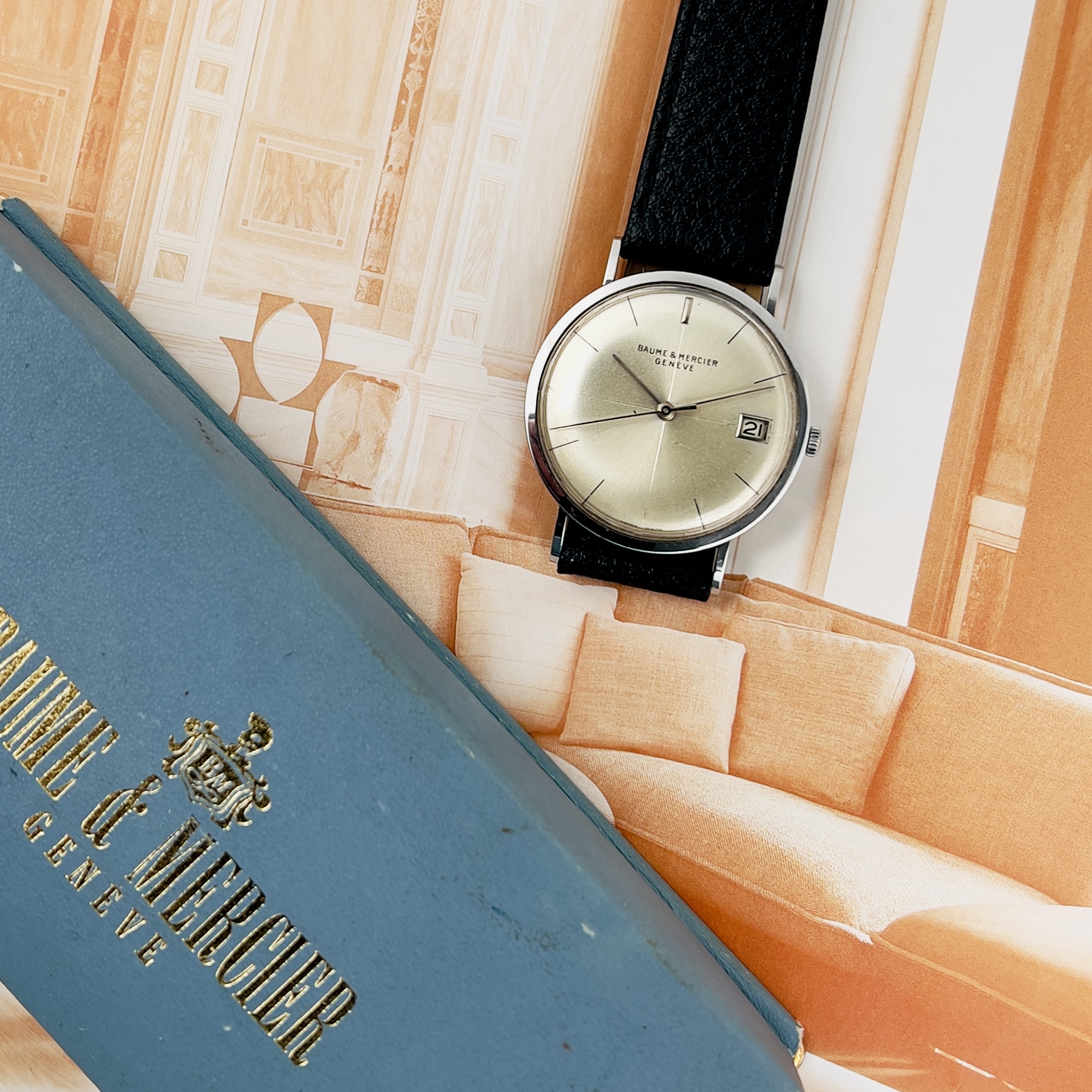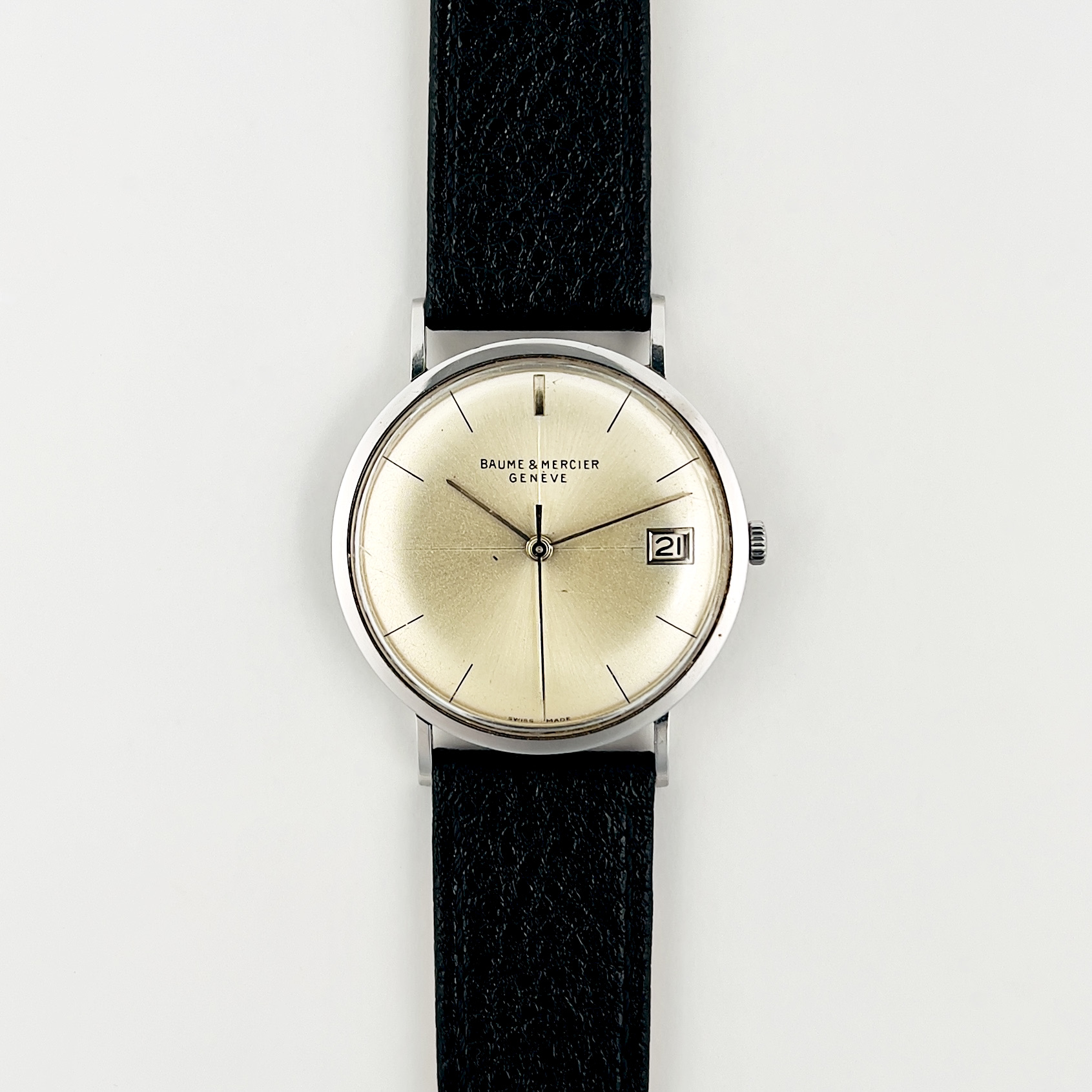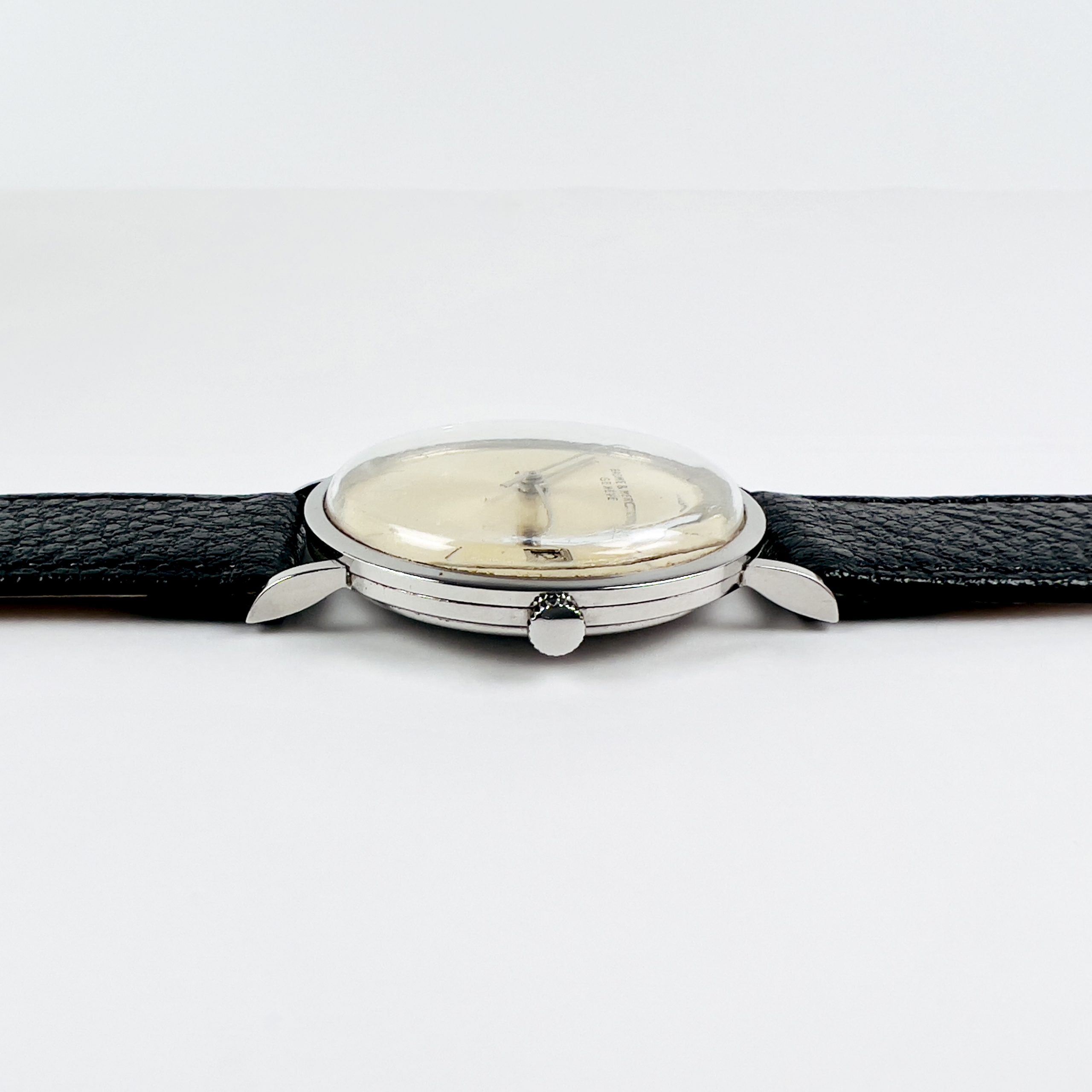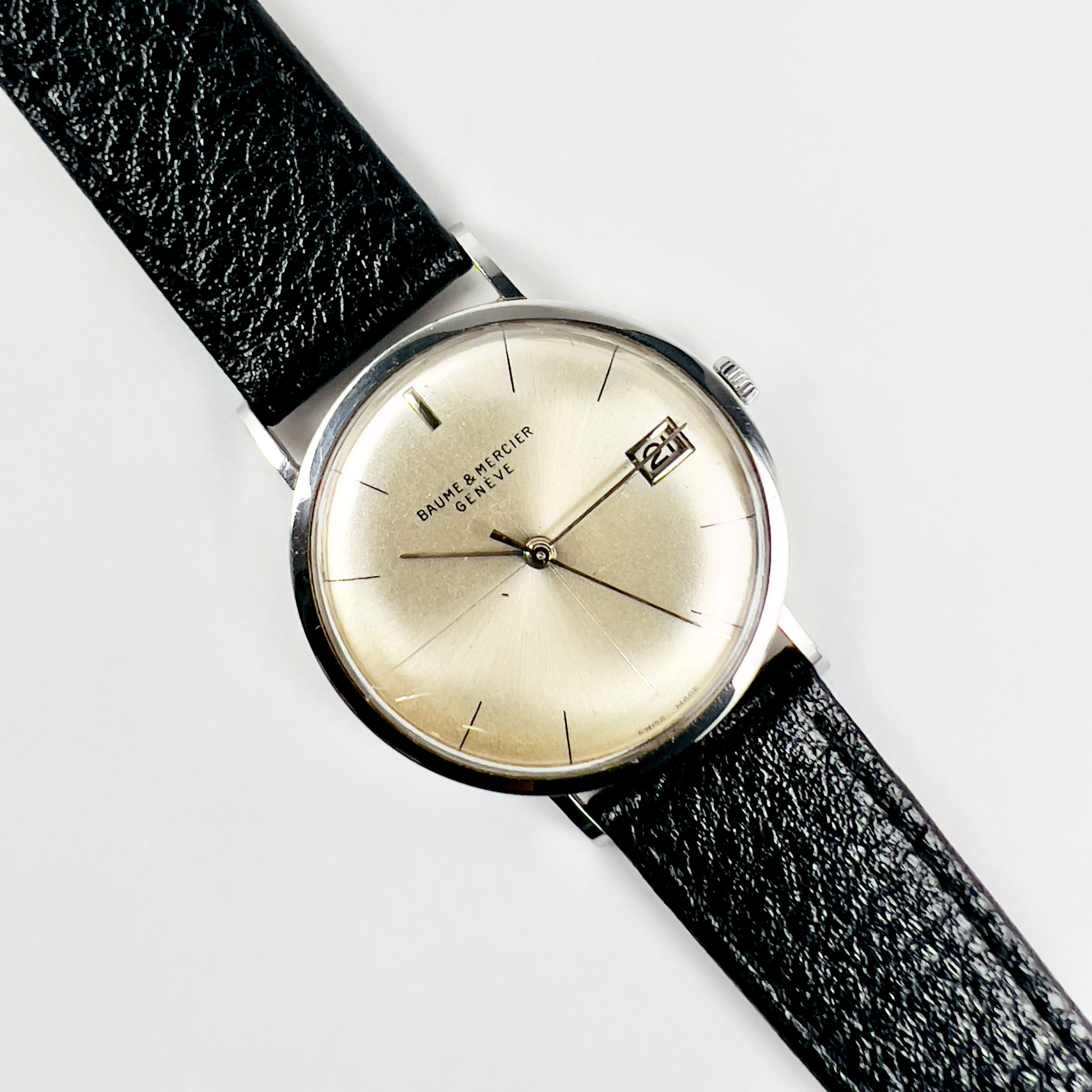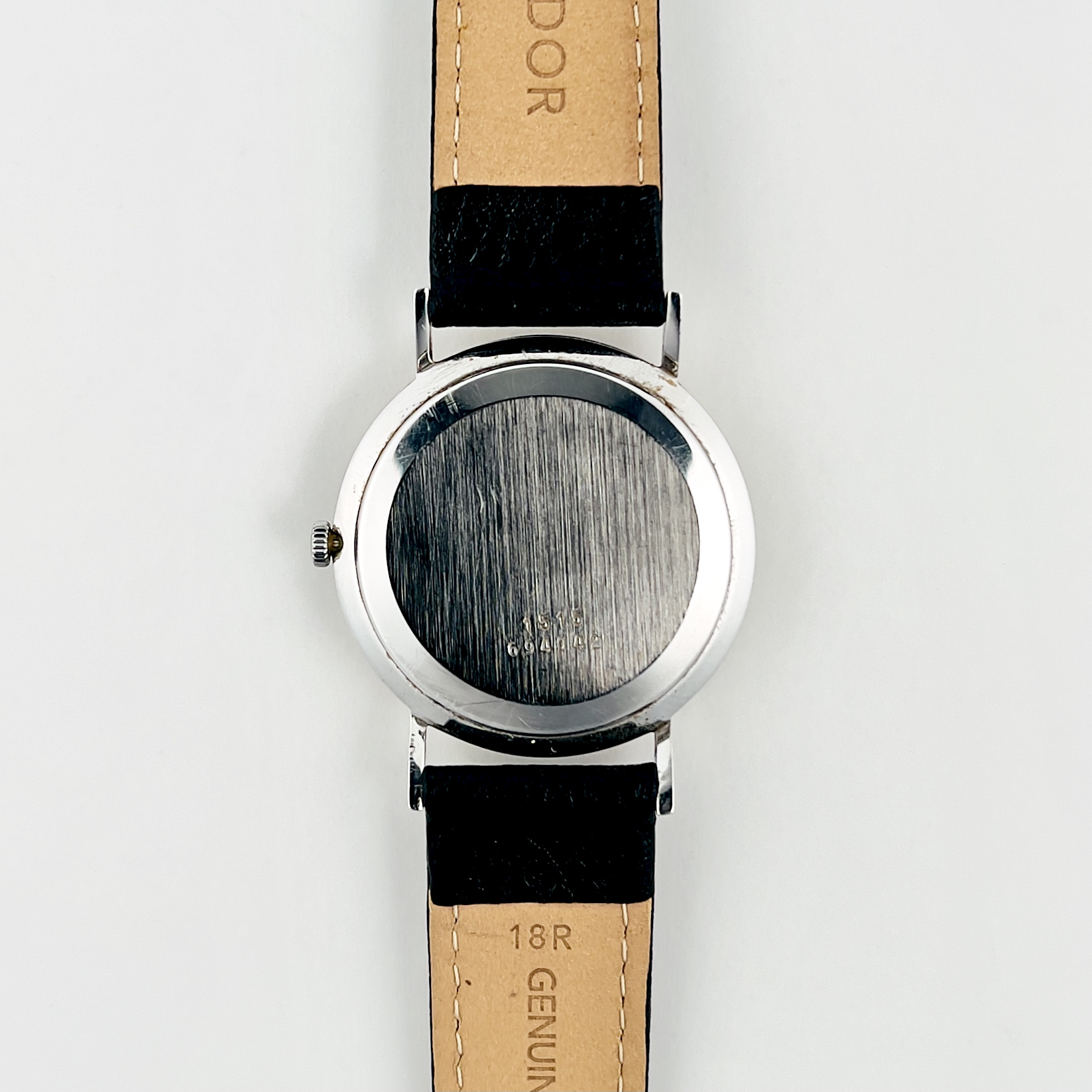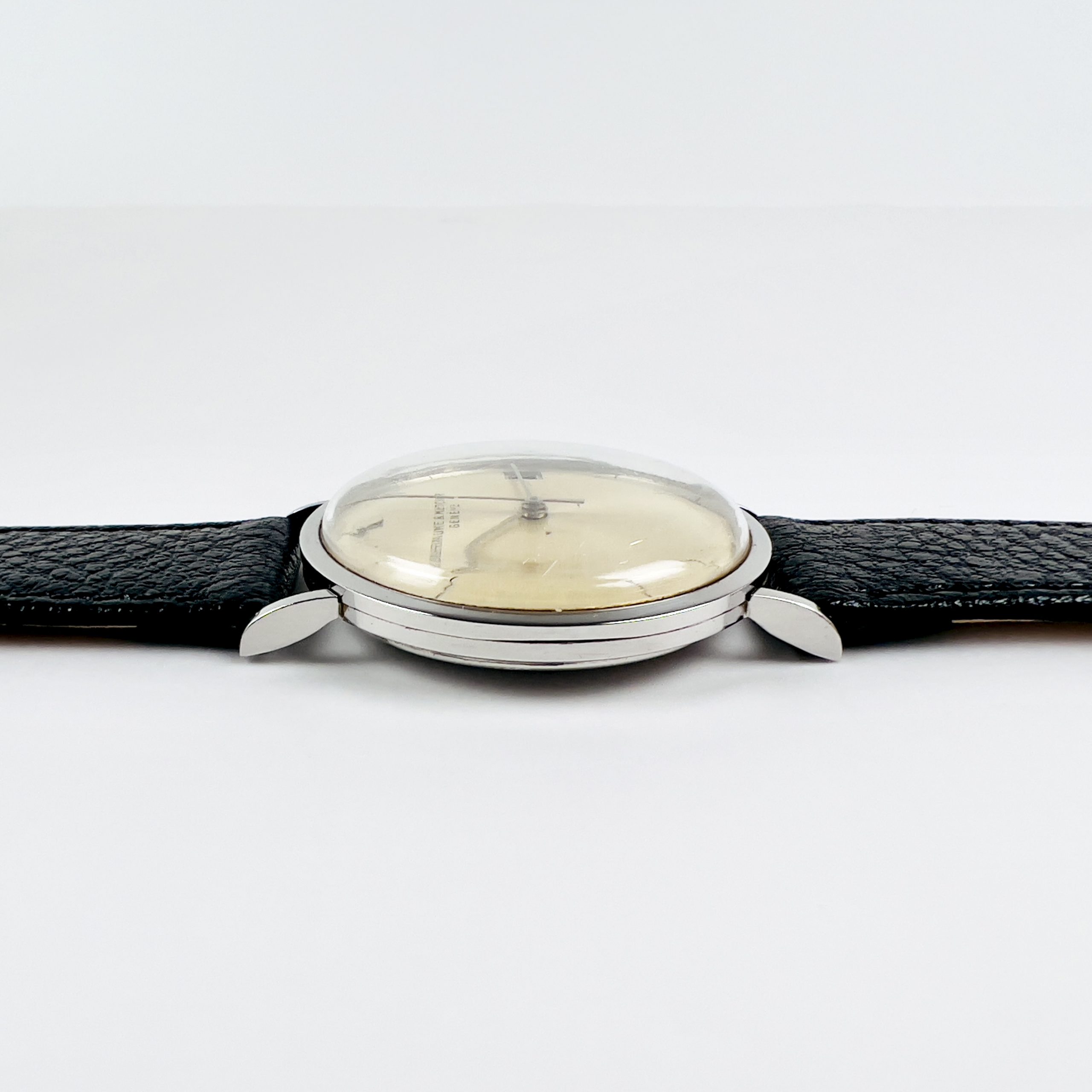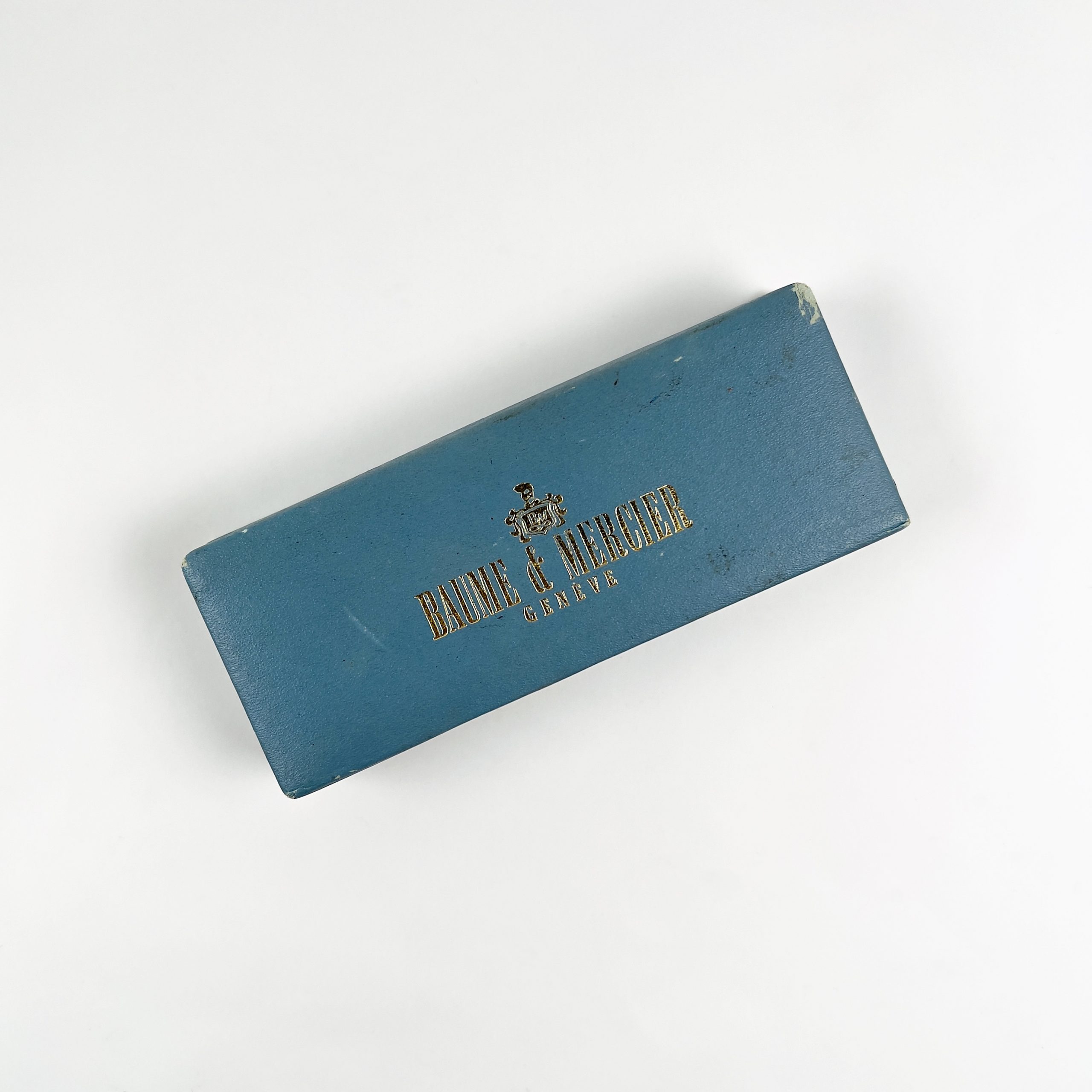-
MINIMALIST
BAUME & MERCIER
CIRCA 1960
-
-
A beautiful and very pure Baume & Mercier watch dating from the 60s.
The history of Baume & Mercier began in 1830. The brothers Louis-Victor and Célestin Baume opened a watchmaking counter in Les Bois in the Swiss Jura.
The Baume brothers' company quickly expanded and, true to its motto "Leave no stone unturned, manufacture only watches of the highest quality", forged a fine reputation through the creation of exceptional pieces incorporating cutting-edge innovations.
-
Aware of the potential of the new territories, the company named Baume Brothers established a branch in London. It soon extended its activities to the entire British Empire. By the end of the 19th century, the company had already acquired a solid international reputation and became a key player in the international watchmaking industry.
At that time, the brand was known for its chronographs and grand complication models. The company won ten grand prizes and seven gold medals at international exhibitions around the world. Its time-measuring instruments are of rare precision. In 1892, the company won a chronometry competition organized by the Kew Observatory near London, with a pocket chronometer watch equipped with a tourbillon movement whose precision remained unequalled for over ten years.
-
At the dawn of the 1920s, William Baume, the head of the company, joined forces with Paul Mercier. Together they founded Baume & Mercier - genève in 1918. From then on, the company established itself as one of the most active companies in the world of wristwatches, offering models with remarkable balance. In 1919, the company was awarded the highest international watchmaking distinction, the "Poinçon de Genève".
During the Roaring Twenties and the entire Art Deco period, the brand imposed its style and left a lasting mark on the world of watch design. Paul Mercier understood that it was essential for the brand to live with the times and embrace change. The brand grasped the importance of women's emancipation and made their desires an inexhaustible source of inspiration.
At the end of the 1940s, the company launched one of its greatest successes: the Marquise. Buoyed by this impetus, the brand produced exquisitely creative and exceptionally modern women's watches, proving that a woman's watch is not just a miniature and somewhat simplistic interpretation of a man's watch.
At the same time, Baume & Mercier made itself known to the public in search of new products by launching the first shaped wristwatches. These watches, both urban and chic, mark the high points of life by combining art of living and elegance.
-
During the 1950s and 1960s, the company, in search of this balance symbolized by the Greek letter Phi - the current Baume & Mercier logo - laid the foundations for the archetype of the traditional round watch. It thus launched classic round watches and chronographs equipped with functions such as moon phases and triple dates.
In 1963, Piaget acquired Baume & Mercier, the former benefiting from the distribution network and the creativity in jewelry watches of the latter, while the latter benefited from the industrial power of the former.
-
This model is extremely sober and elegant with very pure indexes. The watch is timeless and remains quite modern thanks to this will of sobriety.
There is some wear on the case commensurate with age, but nothing that detracts from the overall beauty of the watch. The case bears the serial numbers 1515 and 894042 on the steel case back.
The watch is powered by a Swiss-made mechanical movement.
Superb for a watch that is now about 60 years old.

